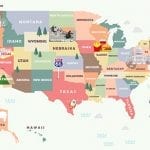Farmers & the Federal Tax Law Changes
Farmers & the Federal Tax Law Changes
Sarah Gerhard, CPA
Erpelding, Voigt & Co., CPAs
Farmers will see an impact to their bottom line due to the recent tax law changes. The new legislation primarily effects tax returns beginning in 2018 with a few exceptions. So while most of the changes discussed below will not be reflected directly on the returns about to be filed by March 1st or April 15th, they could impact the decisions you make on your farm over the course of the next year.
There are many positive changes included in the tax bill regarding farm assets. First of all, the recovery period of farm machinery has been lowered from seven years to five years. Second, farm property with a life of 10 years or less will be allowed to use the 200% declining balance method instead of the 150% method. Third, all farm assets other than land, whether new or used, qualify for 100% bonus depreciation. This change to bonus depreciation is retroactive to September 28th, 2017. And lastly, the 100% expensing by section 179 will increase to $1 million dollars with a phase out of $2.5 million. These changes all mean that depreciation deductions can be accelerated in the earlier years, which makes planning with your CPA even more important.
One unfortunate change is that deferring gains on farm equipment trades via a like-kind-exchange is now only applicable for real property. Personal property exchanges will require the farmer to report the taxable gain on the sale of the machinery based on the “trade-in” value. However, for federal purposes, the farmer can offset the gain by taking 100% bonus depreciation or Section 179 on the new piece of equipment. On the state income tax side, offsetting the whole gain may be more difficult to accomplish. Iowa limits section 179 to $25,000 and does not allow any bonus depreciation. Minnesota also limits section 179 to $25,000 and limits the amount of bonus depreciation to 20%.
The 9% domestic production activities deduction that many farmers have grown accustomed to (typically passed-through from cooperatives on form 1099-PATR) has been repealed. There is a new 20% deduction for qualified business income, including income from pass-through entities & sole proprietorships. The deduction is among the most complex of all the legislation that was passed and the IRS will be providing further guidance on the deduction as not all the details are known yet. In general, the above-the-line deduction will be for the lessor of taxable income or 20% of qualified business income. If you are married and your taxable income is over the threshold $315,000, the deduction begins to phase out. The threshold is half that for single taxpayers.
The new deduction imposes several limitations if your taxable income goes above $415,000 for married taxpayers. The limitation of the qualified business income for those taxpayers is equal to the greater of 50% of wages paid by the business or 25% of wages paid plus 2.5% of the unadjusted basis of farm equipment. This is a favorable stipulation for capital intensive industries such as farming, but is not easy to calculate so meeting with a tax advisor is recommended. There are many strategies to take advantage of this new deduction being circulated, but it is advised to wait for additional IRS guidance before making any drastic changes.
There is one aspect of this new deduction (Section 199A) that has been receiving quite a bit of attention and may receive a “fix” by Congress. As the code is currently written, there could be substantial benefit to farmers who receive a majority of their income from cooperatives. Those farmers would be allowed to deduct the lesser of 20% of total cooperative distributions or 100% of their taxable income less net capital gains. Some lawmakers are questioning this aspect of the bill as it gives a competitive advantage to cooperatives over non-cooperatives. They do not believe the new law should pick winners & losers and fear the law was hurried and consequently had unintended results. It is unknown if Congress will be able pass a “fix.” The changes impacting C-corporations are a mixed bag depending on your income level. If you operate your farm as a C-corporation, you now have a flat tax rate of 21% across the board. Before the tax brackets ranged from 15% to 38%. If you were able to maintain your corporate taxable income at the $50,000 level or less, you will experience a tax hike from the old 15% rate to 21%. This change is permanent while many of the individual changes are only temporary and will eventually expire.
While not a federal change, Minnesota has signed into law a tax credit for the rent or sale of farmland and other farm assets to beginning farmers. Currently, less than 5% of Minnesota farmers are under the age of 35. This credit was enacted as an effort to decrease the high barriers of entry into farming and support the next generation of farmers. The credit is for 5% of the sale price of the farm asset (including land), up to $32,000, 10% of the rental income in the first three years, up to $7,000 per year, and 15% of the share rent during the first three years, up to $10,000 per year. The beginning farmer cannot be related to you and must have entered into farming within the past ten years. The beginning farmer must file the appropriate paperwork with the Rural Finance Authority to be eligible and take a class. This is not a permanent credit, so take advantage of it while you can.
On your current 2017 return, consider deferring income to 2018 and accelerating expenses in 2017. There will still be seven tax brackets next year, but they have been adjusted downwards by about 3% each. The culmination of all the changes above plus the lower tax rates will likely lower your overall tax bill.
These are just a glimpse of the numerous tax law changes. Overall, I believe that many farmers will see a real tax cut and will keep more of their hard earned money at the end of the day. To understand how these changes may apply to your specific situation, consult with your CPA.





